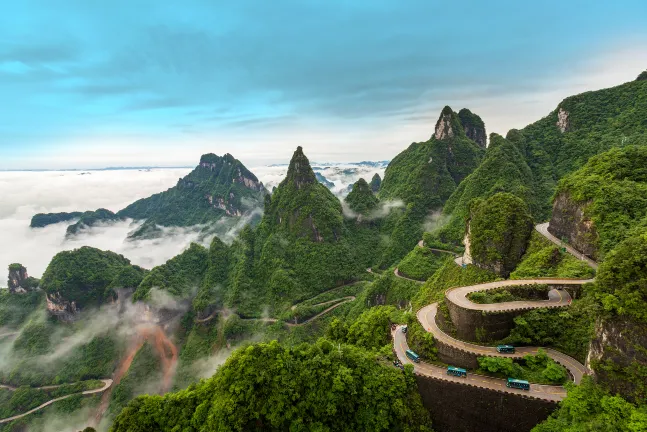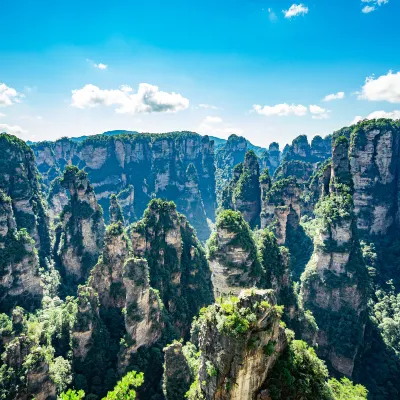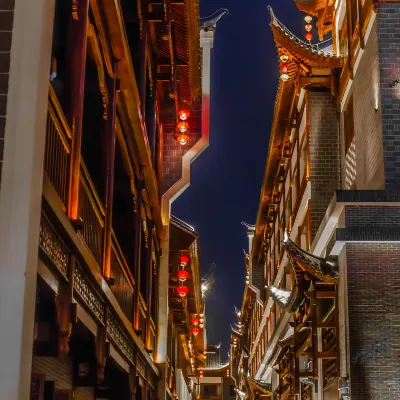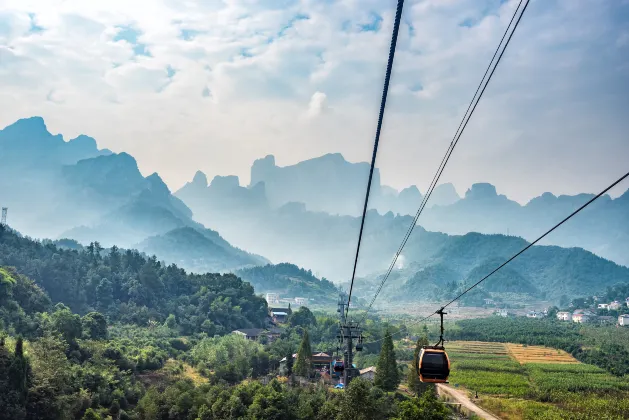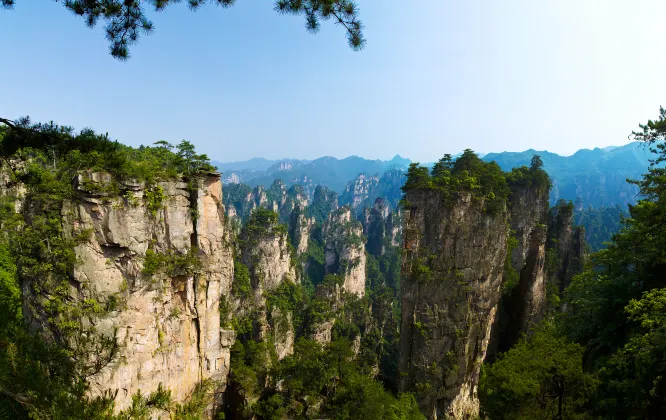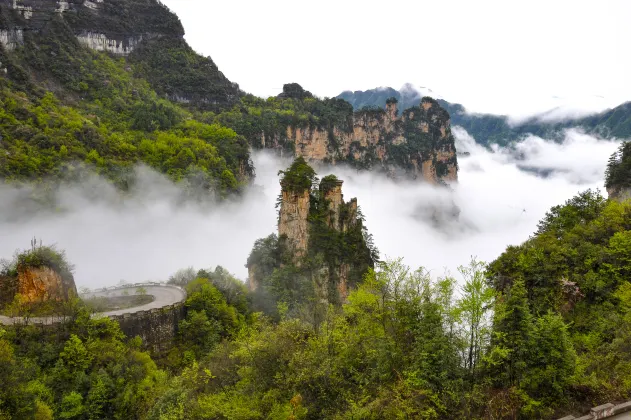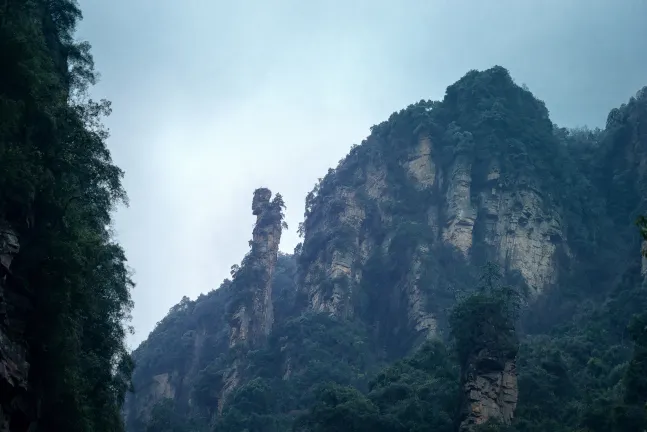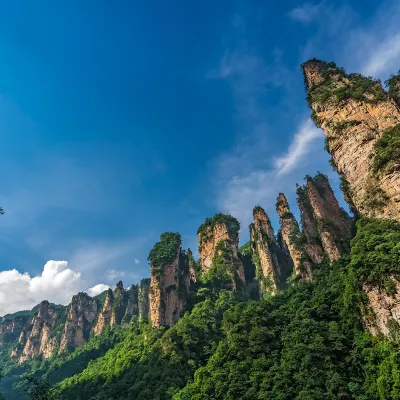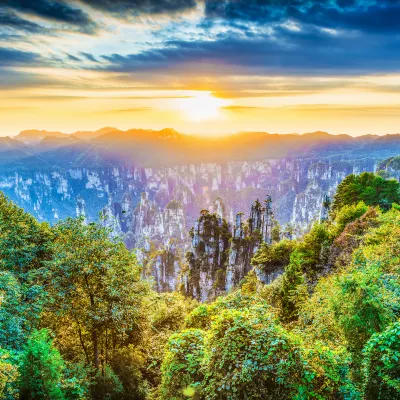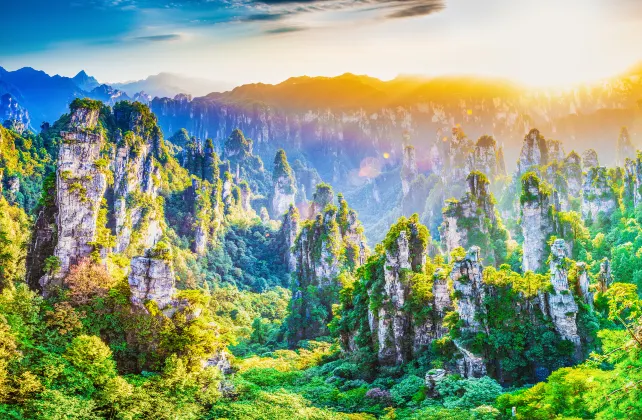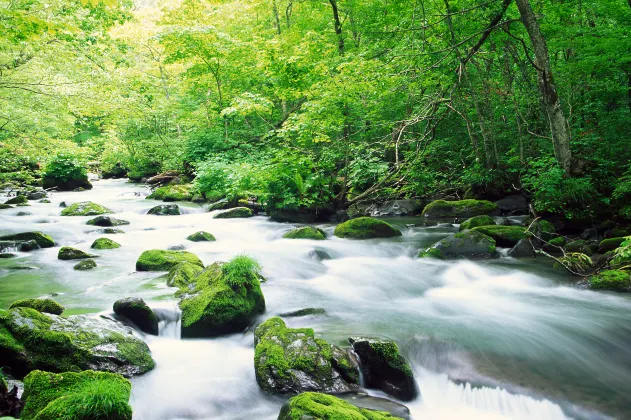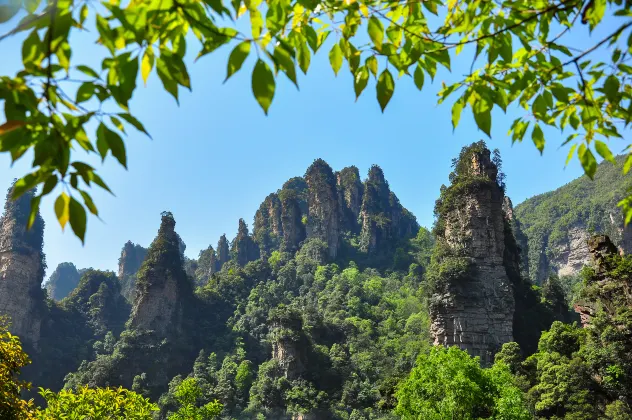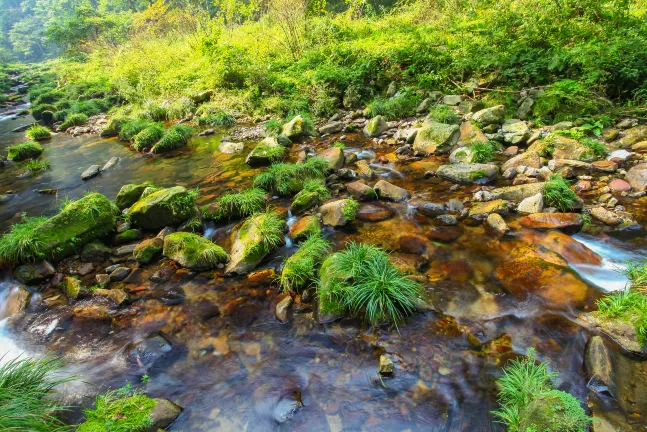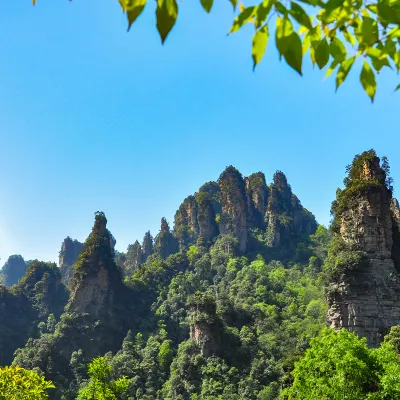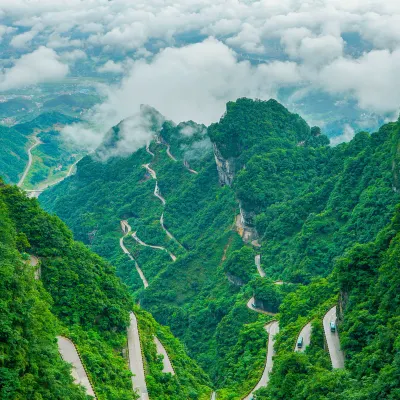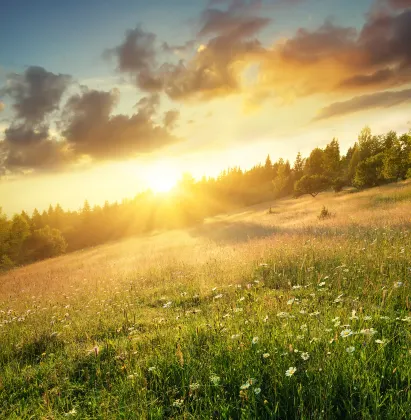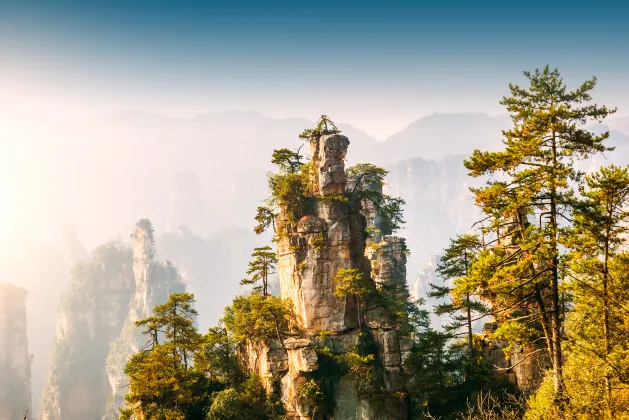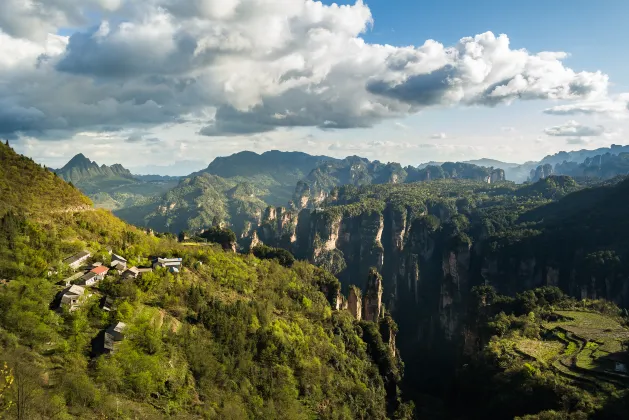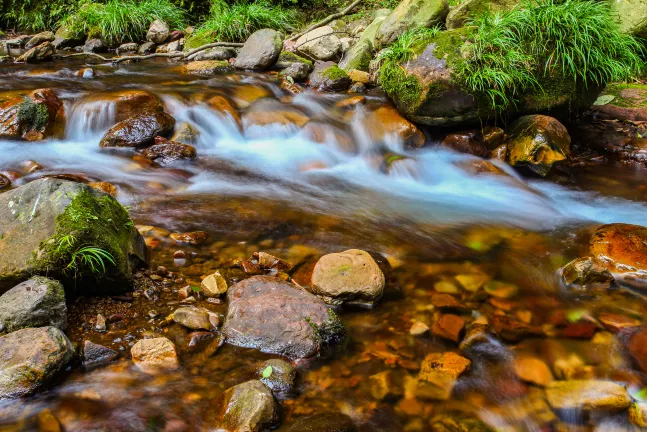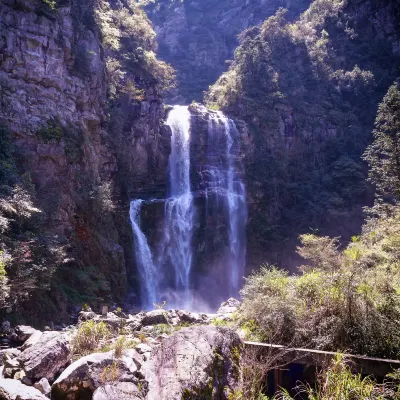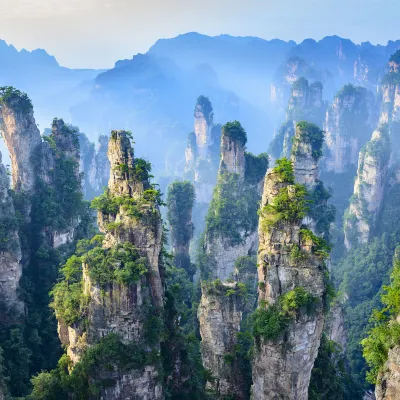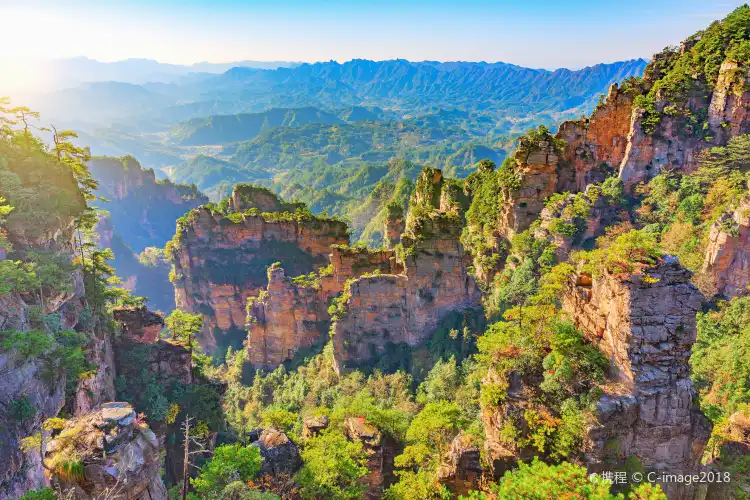
Hotels in Zhangjiajie National Forest Park/Wulingyuan, Zhangjiajie
Enter your dates for the latest hotel rates and availability.
Hot travel dates
Today
Tomorrow
Next Weekend
Apr 2025
- Sun
- Mon
- Tue
- Wed
- Thu
- Fri
- Sat
- 1
- 2
- 3
- 4
- 5
- 6
- 7
- 8
- 9
- 10
- 11
- 12
- 13
- 14
- 15
- 16
- 17
- 18
- 19
- 20
- 21
- 22
- 23
- 24
- 25
- 26
- 27
- 28
- 29
- 30
May 2025
- Sun
- Mon
- Tue
- Wed
- Thu
- Fri
- Sat
- 1
- 2
- 3
- 4
- 5
- 6
- 7
- 8
- 9
- 10
- 11
- 12
- 13
- 14
- 15
- 16
- 17
- 18
- 19
- 20
- 21
- 22
- 23
- 24
- 25
- 26
- 27
- 28
- 29
- 30
- 31
Swipe up to view more
Filter by:
Hotel Star Rating
≤2345
Popular Filters
9+8+7+6+525 hotels to stay in Zhangjiajie National Forest Park/Wulingyuan
Select your travel dates for best hotels in Zhangjiajie, featured by Trip.com based on guests reviews!
Most Booked
Lowest Price
Closest to Downtown
Highest Rated
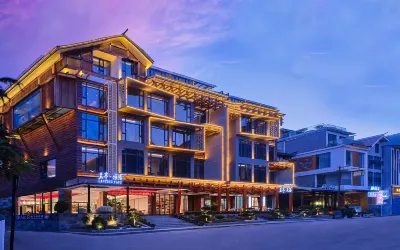
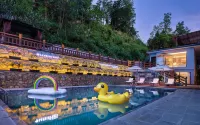

Hotel near Zhangjiajie National Forest Park/Wulingyuan,Zhangjiajie 9.6% of visitors choose this area
LLanders 2025.03.20
This hotel is very close to the zhangjiajie east gate. However, walking across the stream is not doable when the water level of the stream is high. Room is spacious and clean and the toilet bowl is well equipped with cleaning “gadgets”, good for travellers in need to clean body.. staff are young and need to be more communicable with foreigners but generally a good service throughout..thank you for the stay at a place which I think is absolutely wonderful
Excellent
4368 reviews
9.6/10
Price from
$50
per night
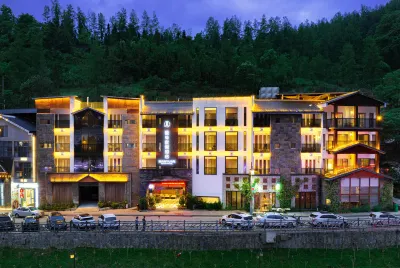
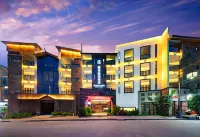

Hotel near Zhangjiajie National Forest Park/Wulingyuan,Zhangjiajie 9.6% of visitors choose this area
WWong 2025.04.10
Hands down the hotel with the best service!! The staff are extremely friendly and give their best to enhance my holiday experience. There was a ”housekeeper” who will get in touch with you upon receiving your booking, and you can ask ANY question that you have. It was my first time travelling to China and having such approachable staff really really helped calm my nerves. She also helped me by recommending activities, fantastic restaurants, day itineraries, and even helped with the purchase of attraction tickets. From my knowledge, they did not profit from the tickets. Having travelled to many countries, I must say that this is the first time I have experienced such a level of excellent service from an accommodation.
The rooms are also superb. Clean and spacious, with a beautiful view of the waters. Location is excellent as it is WALKING DISTANCE to the national park entrance. If you need any help at anywhere at any point of time, the staff is just 1 message away through WeChat, or you could go downstairs to the counter.
But please be advised to take a DiDi taxi directly from the railway station/airport wherever you are coming from in order to maximize accessibility with your luggages. Just like other reviews said, the hotel is not the most accessible by walking if you are carrying heavy luggages. And come on... the taxi should be affordable enough even for just a 5min ride!! This small inconvenience can be easily overcome!
Note for all. DiDi is not available in Furong and Fenghuang. Negotiate with private hires there; be wary of scams and always choose to ride with other groups of people there.
再次非常感谢晓晓小姐和其他员工热心的帮助我们,让我们能舒服的入住和旅游!可惜我忘了在房里拍几张照
Outstanding
3865 reviews
9.5/10
Price from
$33
per night
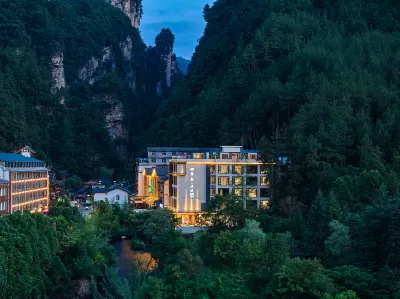
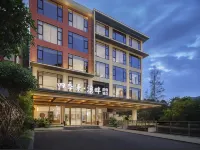
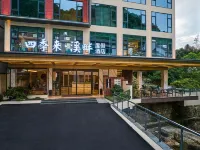
Hotel near Zhangjiajie National Forest Park/Wulingyuan,Zhangjiajie 9.6% of visitors choose this area
GGuest User 2025.03.29
Very nice and comfortable hotel. The experience was above our expectations. The rooms are very comfortable and new, with huge spaces. The hotel also provides a self-service laundry, which was super convenient.
The hotel staff is very kind and helpful. We were also provided with transfers to the main locations of interest for a reasonable payment.
I would definitely recommend this hotel to newcomers to Zhangjiajie National Park. The staff gave us route maps, booked tickets for us, and stayed in contact throughout our stay, even before our arrival.
Thank you very much!
Perfect
810 reviews
9.8/10
Price from
$53
per night

You Might Like
Zhangjiajie Hotels With BreakfastZhangjiajie Hotels With Twin RoomZhangjiajie Hotels With 1 Double BedZhangjiajie Hotels With Swimming PoolZhangjiajie Hotels With Free Cancellation
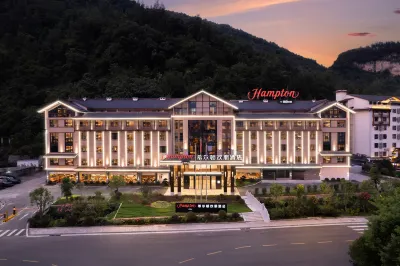
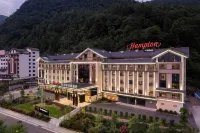

Hotel near Zhangjiajie National Forest Park/Wulingyuan,Zhangjiajie 9.6% of visitors choose this area
LLaurensius Gunawan 2024.11.13
Very good service in give National Forest guide direction
For people who first time coming to Zhangjiajie like us, this hotel has very good service. They provide some staff that assist tourists to get a guide direction in Zhangjiajie National Forest route. This national forest park is very huge. The entrance ticket is available for 4 days visit. So you can imagine how big this area is. Therefore, if you do not have enough time, you need a brief information that helps us arrange the excellent routes so that we can get the point of view and enjoy it. That is the purpose of this staff, to help us, bravo! Thanks to Huan Huan, female staff, your instruction is awesome. The hotel room is spacious enough, but lacks of wardrobe. Breakfast is amazing with many varian cuisine. There is a free laundry service that is very helpful for long tourists like us. The kind thing is this hotel put drinking water (bottles) everywhere. It is very pleasant, so hotel guests do not worry about drinking anymore. One more satisfying thing is the drain shower. The water pressure is strong but soft. Getting our body washed with a treatment like this after a tiring journey is very enjoyable.
Outstanding
953 reviews
9.5/10
Price from
$82
per night
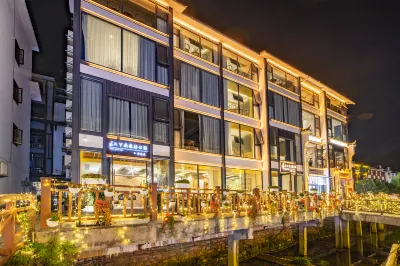
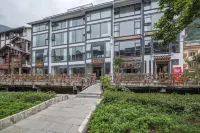
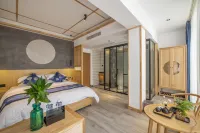
Hotel near Zhangjiajie National Forest Park/Wulingyuan,Zhangjiajie 9.6% of visitors choose this area
AAlpacanana 2024.12.25
Really convenient location! About a 5mins walk to the entrance of wulingyuan, the owner(?) was really friendly and helped booked all our tickets (even to the romance park) at a cheaper price and even helped plan our route. Theres a minimart across the street and the night market downstairs its really worth it. The rooms are also very big and comfortable. And even have laundry that you do yourselves and they help hang while you are out. I really enjoyed my stay here and will recommend this always!! I
Excellent
1387 reviews
9.6/10
Price from
$30
per night
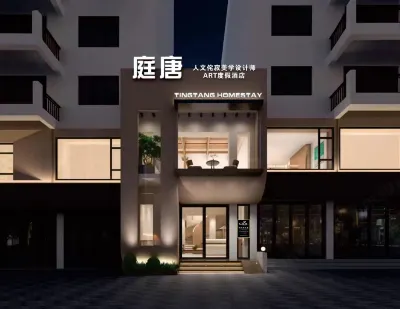


Hotel near Zhangjiajie National Forest Park/Wulingyuan,Zhangjiajie 9.6% of visitors choose this area
AAnonymous User 2024.12.23
The hotel is strategically located near the bus station, many shops and restaurants are just walking distance.
The room is very spacious and comfortable, giving us really good rest after the tiring hike in the national park.
The front desk is helpful too, they recommended us a very good restaurant for our dinner. I really had a good stay there.
Perfect
991 reviews
9.8/10
Price from
$46
per night
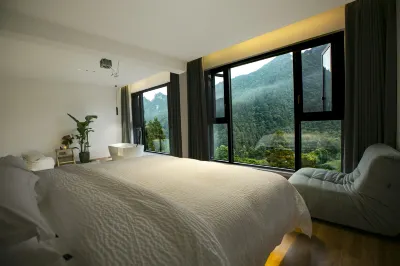
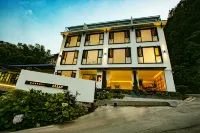
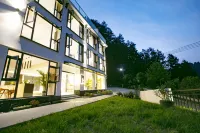
Hotel near Zhangjiajie National Forest Park/Wulingyuan,Zhangjiajie 9.6% of visitors choose this area
CChat Tang 2024.12.27
A peaceful atmosphere where you can truly connect with nature, yet still enjoy comfort. It's located a bit away from the city center, but traveling in China is now very convenient. DiDi is accessible everywhere and affordable. Highly recommended for those who enjoy slow-life accommodations and don't need perfect service. Simple and rustic, this style will leave you with unforgettable memories of relaxing after your Zhangjiajie trip.
Perfect
411 reviews
9.8/10
Price from
$47
per night
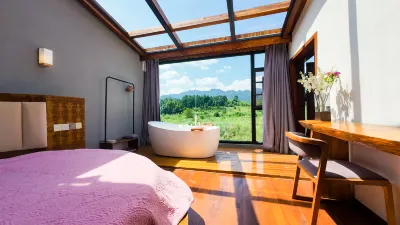
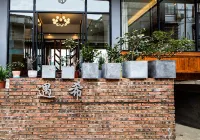
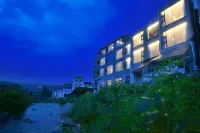
Hotel near Zhangjiajie National Forest Park/Wulingyuan,Zhangjiajie 9.6% of visitors choose this area
GGuest User 2025.04.08
We had a very good experience over there. The owner is very friendly. He picked us up from Wulingyuan Bus Station. (You need to take bus from Zhangjiajie Bus station which is right next the Zhangjiajie Railway Station to Wulingyuan). This homestay is located in the quiet place along with a small stream. The room is very clean with free breakfast(P6). The homestay is 5 mins driving away to Zhangjiajie National Forest Park. The owner also offered detailed travel plan for us, so we had a great time in the national park. We loved their home cooking local foods so much!!!!!( I attached the menu below). We stayed there for 5 days, we ate out the first day. After we tried their cooking, we didn't eat out anymore. We texted owner before we came back. When we arrived homestay all the dishes had been ready. We highly recommend this homestay.
Perfect
1031 reviews
9.8/10
Price from
$27
per night
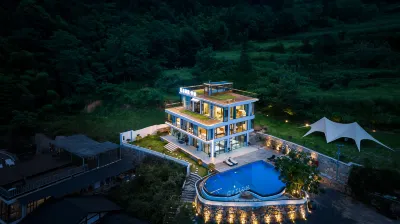
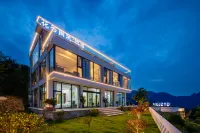
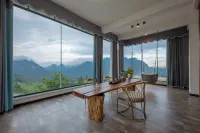
Hotel near Zhangjiajie National Forest Park/Wulingyuan,Zhangjiajie 9.6% of visitors choose this area
GGuest User 2025.04.05
I booked a sunrise B&B for the good view. Overall, it was OK. The owner was very nice!! He prepared a surprise for us on our anniversary🥳He also enthusiastically told us the route to visit the National Forest Park
The B&B is on the mountain. It is a stand-alone privately operated small villa. It is not a large and well-established hotel. There is basically no indoor public area.
The view from the swimming pool on the first floor is super good! It is refreshing
The room is large and clean. However, the design of the bathroom can be improved, such as the hook for hanging clothes can be placed outside the bathroom
Perfect
97 reviews
9.9/10
Price from
$70
per night

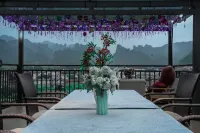

Hotel near Zhangjiajie National Forest Park/Wulingyuan,Zhangjiajie 9.6% of visitors choose this area
AAnonymous User 2025.02.01
The room is spacious, cozy and the bathrooms also clean with amenities, we love our room very much . Unfortunately the elevator and the Ailey were not too clean . We stayed for 3 nights but they only change our bed sheets once. They provided free breakfast , it was noodle soup and we may choose the beverages tea or coffee.The noodle soup taste was so yummy and they also provided plain bun, eggs, kinds of pickles which we love it very much. The owner offered us the entrance ticket to The National Park which more cheaper price than online . He also recommended us to ride their family cab with more cheaper price to the Glass Bridge. On the last day of our staying, the female staff gave us free gift, it was special tea From Wulingyuan. We love Wulingyuan and Zhangjiajie . hopefully we have a good chance to come back
Outstanding
1085 reviews
9.5/10
Price from
$19
per night
What Travelers Said About the Best Hotels in Zhangjiajie
See all
Browse these genuine traveler ratings & reviews to find your perfect stay.
9.8/10
Perfect
GGuest UserSuper super super super good experience!!! I really want to live here forever😭😭😭
The boss lady is very nice and helped us plan a two-day tour in detail. In fact, we strictly followed the boss lady's route and visited all the attractions that could be visited. The two days were worth it, especially the two hidden attractions, which were so beautiful! ! And almost no one went there, it was just a private view🥰🥰
The room was super clean and spacious, and there was a large French window, where you can see the stream outside~ The small breakfast cakes were made by the boss lady herself, and they were super delicious! I have to eat two every day😋😋 Knowing that my friend was having an affair, the boss lady also prepared brown sugar water and turmeric milk, which was super considerate! ❤️ and the boss lady is also very good in English and can communicate fluently with foreign guests😯, praise!
btw Zhangjiajie is really very, very beautiful. My friend and I originally planned to play for only one day, but after listening to the advice of the boss lady, we decided to play for two days. After playing, I felt that this decision was right. The places we visited on both days were very, very beautiful. Zhangjiajie has its own style on sunny and rainy days. It is simply a paradise on earth. I sincerely recommend friends who come to play to play here for a few more days! ! ! My friend and I think we are willing to stay here for a month hahahaha
In short, it was a very perfect accommodation experience! The boss lady was very enthusiastic, the B&B conditions were excellent, and it was clean and tidy. This is the first time I booked a B&B by myself, and I didn’t step on thunder at all. Hehe, if I bring my parents to Zhangjiajie next time, I will also stay here! 🥳
Xishang Yunjian Boutique B&B
Hotel near Zhangjiajie National Forest Park/Wulingyuan, Zhangjiajie 9.6% of visitors choose this area
Price per night from:$23
9.6/10
Excellent
PPaul. SGood little hotel, managed by husband and wife team with a helper. Everything looks new and clean. Small but nicely furnished. Owners very friendly and helpful. Simple Chinese buffet breakfast but coffee, toast bread with butter and jam also provided. Free laundry area on rooftop. Good location. Can walk to Eastern gate in 15-20 minutes, about 1.3km. Good value for money.
Wuling Shanshui Hotel
Hotel near Zhangjiajie National Forest Park/Wulingyuan, Zhangjiajie 9.6% of visitors choose this area
Price per night from:$35
9.6/10
Excellent
RrodrigopmpsOur trip to Zhangjiajie couldn’t have been better! This hotel is a few minutes walking distance away from a secondary (non crowded!) entrance to the National Park. The view from the pool is facing the National Park too, which couldn’t be more beautiful. Same goes for the surroundings as the area is super calm, you can relax indeed. The restaurant serves good typical food (we highly recommend the sea bass fish - both versions). The breakfast is acceptable with a mix of asian western (although mostly Asian you can find such things as yogurt, croissants, butter and bread).
The hotel could be improved in minor details, which we passed on to the team. But these won’t make your experience bad in anyway. What made our stay one of the best in this big China trip was our hostess named Fan! <3
She was always available for us, did the impossible to find anything we needed and surprised us all the time. She carefully planned all our itineraries for all the attractions, never forgot a single request and spoke English better than anyone else in the Team. She was 6 out of 5*. ;)
Don’t miss Jojo, the beautiful and cute cat belonging to the hotel. :)
Our room also included a transfer which we used to the airport by the end of the stay, driving us in time to our flight.
We hope to be back one day. :)
Vantu·ANNICA Tourism Resort (Zhangjiajie National Forest Park)
Hotel near Zhangjiajie National Forest Park/Wulingyuan, Zhangjiajie 9.6% of visitors choose this area
Price per night from:$129
9.5/10
Outstanding
GGuest UserThe room is clean and tidy. It is very close to the East Gate Scenic Area and can be reached on foot. There is a river downstairs, so children can play in the water. The landlord is very nice and enthusiastic. He is eager to help plan the route to the forest park. The group-purchased tickets for the attractions are also very cost-effective. I will stay here again if I have the chance to come in the future.
Xijian Liangshe Vacation Guesthouse
Hotel near Zhangjiajie National Forest Park/Wulingyuan, Zhangjiajie 9.6% of visitors choose this area
Price per night from:$26
9.5/10
Outstanding
JJintianyiersanVery, very good, very cost-effective for the peak season. I specifically read the bad reviews and felt that this one should meet my requirements. really. The room is very big, clean and tidy, with ethnic characteristics. Downstairs is the snack street and two rows of shops.
The beautiful boss is warm and gentle. The two of them are always smiling and very kind. Next time I come to see the sea of clouds in the off-season, I will stay here again
Yinxintaikezhan
Hotel near Zhangjiajie National Forest Park/Wulingyuan, Zhangjiajie 9.6% of visitors choose this area
Price per night from:$14
9.5/10
Outstanding
GGuest UserThe room has an outside window, and there is another building opposite. However, we basically don't look out the window after we come back from the mountain, so it is acceptable to us.
It's great that the inn has an elevator, which increases the comfort level a lot. 👍👍👍
There is a public drying area on the seventh floor with a canopy, so there is no need to worry about the rain affecting the drying of clothes, and there are many clothes hangers to use.
For the route to visit Wulingyuan, you can consult the boss, there is a map. The boss's nephew Xiaoman and the boss's daughter gave us good suggestions and gave reasonable modification plans as we modified our itinerary, and they answered all questions. 👍👍👍
If you buy tickets for the small train or tickets or tickets with three ropes and one elevator, you can ask the boss to buy them after booking a room, which will be cheaper.
Before leaving, the boss's wife suggested that we take a taxi to the West Station, which is great. I originally thought that I had to go to the bus station to take a bus to the West Station, and this kind of place might not be as convenient as a big city. In fact, calling Didi is fast and cheap, mainly because there are three people with luggage, and taking a taxi is comfortable and convenient. The lady boss is also learning from the previous guests, and then teaching the good experience to the later guests. 👍👍👍
There is a rice noodle shop in Cili nearby, and we had breakfast there and went to the East Gate on the way. We had breakfast there for a few days. It was well rated on Dianping.com. It was indeed cheap and good quality, with many styles and large quantities. The lady boss was also warm and thoughtful.
There are so many things around Nanmen and Huangshizhai, much more than Tianzi Mountain and Yuanjiajie. Pay attention to safety when visiting. I like Tianzi Mountain very much, but it was a pity that it was foggy most of the time during the visit, Shentang Bay was full of fog, and Dianjiangtai was not visited because my parents were tired, which was a pity. But after getting off the bus at Shentang Bay, it was not easy to get a ride later. Some drivers would not stop when their cars were full. We waited for two or three cars before the driver stopped the car. After getting on the car, we arrived at Helong Park in three to five minutes.
Lotto Hotel
Hotel near Zhangjiajie National Forest Park/Wulingyuan, Zhangjiajie 9.6% of visitors choose this area
Price per night from:$13
9.5/10
Outstanding
MmwahahaA great stay for the price point!
Pros:
The inn is very convenient foreigners as the receptionist speaks fluent English. They can help to book attraction tickets (at a small discount) and can help to plan or recommend routes that are suitable for you. They can also arrange to send your luggage to the train station if needed (own expense). They reply quickly via WeChat to any questions you may have, so that was convenient.
For travellers who are coming from the High Speed Rail Station, the inn is located down the road to a bus station with buses that connect to the airport, zhangjiajie city, and the train stations. Talking the bus is much cheaper than getting a taxi since the Wulingyuan area is a 30minute drive from the high speed rail station (zhangjiajie west station). There are also many eateries within the vicinity of the inn. True to the description, the inn is a 10 minute walk to the entrance of Zhangjiajie National Forest Park (east gate).
Amenities provided in the room are true to the description. An additional surprise is the bed heating function. It made the bed extra cozy during the cold months.
Cons:
The inn does not have a lift, so it might not be suitable for those with mobility problems. While there’s a washing machine, there is no dryer (there is a clothes drying region to air dry your clothes).
No. 106 Guihua Road Inn
Hotel near Zhangjiajie National Forest Park/Wulingyuan, Zhangjiajie 9.6% of visitors choose this area
Price per night from:$22
9.5/10
Outstanding
GGuest UserThe hotel is located near the entrance of the scenic spot, the location is very good, it is not noisy at night, and I feel that the bedding is very good, so I slept very well. In addition, there are two breakfast shops next to the hotel, with a wide variety of delicious food. There are also many restaurants within 100 meters of the hotel, and the taste is also good. In this hotel, food, accommodation and transportation are very convenient. By the way, the Cuicui tea downstairs is also delicious.
Xiyue Hotel
Hotel near Zhangjiajie National Forest Park/Wulingyuan, Zhangjiajie 9.6% of visitors choose this area
Price per night from:$42
9.4/10
Outstanding
DDarren5/5 - Amazing Stay in Zhangjiajie National Park
This hotel is a gem! Perfect location—super close to the national park. The host was super kind and helped us figure out the best spots to visit. The room was spotless and had a cool Avatar Mountains vibe. Everything felt fresh and new. Highly recommend if you're visiting Zhangjiajie, great stay!
Purespace
Hotel near Zhangjiajie National Forest Park/Wulingyuan, Zhangjiajie 9.6% of visitors choose this area
Price per night from:$61
9.3/10
Very Good
AAnonymous UserThe room was clean and tidy. The boss was kind enough to give us a large room. He also helped us book tickets for scenic spots and recommended travel routes. Because parking at the inn is free, I didn't drive to the scenic parking lot. It's only a 5-10 minute walk from the sign gate which is very convenient. There are also many lively places to stay and eat near the inn, which is a good experience ~
Jian Shan Ke Zhan
Hotel near Zhangjiajie National Forest Park/Wulingyuan, Zhangjiajie 9.6% of visitors choose this area
Price per night from:$15
FAQs About Zhangjiajie National Forest Park/Wulingyuan Hotels
Which hotels near Zhangjiajie National Forest Park/Wulingyuan are the most popular?
Purespace, Lanting Elegant Restaurant Hotel (Zhangjiajie National Forest Park Sign Store) and Pullman Zhangjiajie
are some of the most popular hotels.
What are some accessible hotels near Zhangjiajie National Forest Park/Wulingyuan?
Pullman Zhangjiajie, Neodalle Zhangjiajie Wulingyuan and Eryatou Inn (Zhangjiajie National Forest Park)
are popular accessible hotels.
What popular hotels near Zhangjiajie National Forest Park/Wulingyuan have restaurants?
If you like the idea of sampling local flavors while traveling, consider staying at
Purespace, Lanting Elegant Restaurant Hotel (Zhangjiajie National Forest Park Sign Store) and Pullman Zhangjiajie
. There are plenty of restaurants that serve local dishes near these hotels.
What's the average price of hotels near Zhangjiajie National Forest Park/Wulingyuan this weekend?
According to Trip.com's data, the average price for a weekend night at hotels near Zhangjiajie National Forest Park/Wulingyuan in Zhangjiajie is $104. Prices fluctuate often; this rate is for reference only.
What's the average price per night of hotels near Zhangjiajie National Forest Park/Wulingyuan
According to Trip.com's data, the average price per night at hotels near Zhangjiajie National Forest Park/Wulingyuan in Zhangjiajie is $94. Prices fluctuate often; this rate is for reference only.
What hotels are recommended near Zhangjiajie National Forest Park/Wulingyuan?
If you're having a hard time choosing a hotel, consider staying at
Pengpeng Style Hotel, Yuexigu Inn or Xishan Yunshe (Zhangjiajie Forest Park Scenic Area)
, these hotels have great reviews. Be sure you book early!
What luxury hotels are near Zhangjiajie National Forest Park/Wulingyuan?
Neodalle Zhangjiajie Wulingyuan, DAYS HOTEL BY WYNDHAM(Zhangjiajie Wulingyuan ) and Pullman Zhangjiajie
are popular luxury hotels that aren't too expensive.
Which hotels near Zhangjiajie National Forest Park/Wulingyuan are good for couples?
Romantic Full House Theme Inn
is a popular hotel for couples.
Which hotels near Zhangjiajie National Forest Park/Wulingyuan have gyms?
Since staying fit is important to a lot of guests, it's no surprise that gyms can be found in many hotels.
Lanting Elegant Restaurant Hotel (Zhangjiajie National Forest Park Sign Store), Pullman Zhangjiajie and Neodalle Zhangjiajie Wulingyuan
are some popular hotels with gyms.
Which hotels near Zhangjiajie National Forest Park/Wulingyuan have free Wi-Fi?
Whether you're traveling for business or leisure, Wi-Fi is an essential.
Purespace, Lanting Elegant Restaurant Hotel (Zhangjiajie National Forest Park Sign Store) and Pullman Zhangjiajie
are all popular hotels that have free Wi-Fi.
Which popular hotels near Zhangjiajie National Forest Park/Wulingyuan have pools?
Summer is a great season to take your kids or family on a trip to Zhangjiajie National Forest Park/Wulingyuan in Zhangjiajie.
Purespace, Lanting Elegant Restaurant Hotel (Zhangjiajie National Forest Park Sign Store) and Pullman Zhangjiajie
are some popular hotels with pools.
Which popular hotels near Zhangjiajie National Forest Park/Wulingyuan have parking?
If you're planning on driving to Zhangjiajie National Forest Park/Wulingyuan in Zhangjiajie, why not stay at
Purespace, Lanting Elegant Restaurant Hotel (Zhangjiajie National Forest Park Sign Store) or Pullman Zhangjiajie
? These are all popular hotels with parking lots.
Which hotels near Zhangjiajie National Forest Park/Wulingyuan are popular with budget travelers?
Whether you're traveling for business or going on a vacation,
Travel of Swan Hostelling International (Wulingyuan Forest Park Logo Store), Zhangjiajie Kamu Travel Concept Store (Wulingyuan Scenic Area) and Shanjian Boutique Hotel
are popular hotels at great price points.
What hotels near Zhangjiajie National Forest Park/Wulingyuan offer breakfast?
A delicious breakfast is a great way to kick start your day. If you want to stay at a hotel with breakfast near Zhangjiajie National Forest Park/Wulingyuan in Zhangjiajie, consider
Purespace, Lanting Elegant Restaurant Hotel (Zhangjiajie National Forest Park Sign Store) or Pullman Zhangjiajie
. Be sure to book these popular hotels in advance!
Hotel Info for Tourists
| Total Properties | 525 |
|---|---|
| Number of Reviews | 312,894 |
| Lowest Price | $11 |
| Highest Price | $305 |
| Average Price (Weekdays) | $52 |
| Average Price (Weekends) | $54 |
Plan your whole trip with Trip.com
Keep Exploring
Hotels in Other Areas
Hotels near Attractions
Hotels near Baofeng LakeHotels near Golden Whip StreamHotels near Wulingyuan sign gateHotels near 72 wonder towerHotels near Yuanjiajie Scenic AreaHotels near Bailong ElevatorHotels near Tianmen Mountain National Forest ParkHotels near Zhangjiajie National Forest ParkHotels near Wu Ling YuanHotels near Tianmen Mountain CablecarHotels near Zhangjiajie Hehua AirportHotels near Zhangjiajie West Station
Most Viewed Hotels
the Mansion Inn Dream MansionZhangjiajie Four Seasons Lai · Riverside Resort Hotel (Baofeng Lake Scenic Area)Yuxi HomestayEryatou Inn (Zhangjiajie National Forest Park)Luyao Inn (Zhangjiajie Tianmen Mountain Cableway)Hampton by Hilton, Zhangjiajie Tianmen MountainWYNDHAM GARDEN ZHANGJIAJIE TIANMEN MOUNTAINManyuan Resort HotelLanting Elegant Restaurant Hotel (Zhangjiajie National Forest Park Sign Store)Tian Men Shan Qian Hotel
